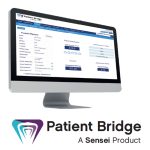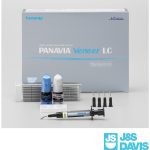As dental professionals, it’s important to ensure that patients are sufficiently educated on oral health maintenance for the prevention of diseases. But, more often than not many of you will encounter patients who lack the foundational knowledge on how to keep their oral cavity healthy.
As with most things, going back to basics is effective in making sure that patients know how to best care for their dental health. Brushing and flossing are accepted as the ideal methods for cleaning interdentally, keeping the mouth clean and free from complications, but as you well know there are areas that often get forgotten.
Out of sight, out of mind
The posterior teeth are considered to be one of the most common areas to be missed during at-home dental care. It could be argued that this region requires more focus when brushing and flossing, as it is at a higher risk of certain complications, such as fractures and plaque formation. For instance, research has highlighted that posterior teeth have an increased susceptibility to caries, as a result of their pit and fissure occlusal landscape, arch position and eruption status.[i] It has also been suggested that the mandibular molars are the most commonly fractured teeth, due to torque forces when eating, for example.[ii] Further research has noted that posterior sites within the mouth are more prone to gingival inflammation when compared to anterior teeth,[iii]likewise noting that this is most likely due to patients’ anatomical and physiological features.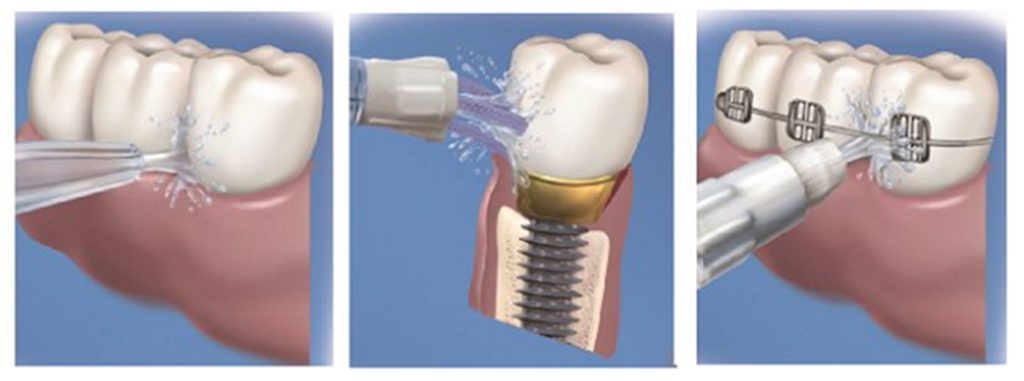
Tip of the tongue
If you ask a patient to consider where else they should focus on cleaning in the mouth, how many would say the tongue? The dorsum of the tongue has a large surface that accommodates masses of microorganisms,[iv]and the biofilm of the tongue consists of epithelial cell debris, blood cells and food debris.[v] Researchers have noted that cleaning the tongue can help to prevent oral issues such as halitosis,iv as it aids in the removal of the bacteria that produces volatile compounds (VSCs), which are the cause of malodour.
Studies have also noted that the tongue could host periodontal pathogens,iv increasing the risk of the disease in patients.[vi] ‘White tongue’ is another condition whereby the papillae on the tongue become inflamed, partly due to poor oral hygiene and ineffective cleaning of the tongue.[vii]
The twilight zone
Keeping the gingiva clean is vital to prevent the development of pathologies, like periodontitis. The gingiva is highly susceptible to poor dietary and lifestyle habits, such as smoking and consuming high levels of sugary foods and drinks, which are prevalent habits among the population.[viii],[ix] Alongside brushing, patients should be flossing and/or interdentally brushing to remove food debris and bacteria along the gumline – according to the Oral Health Foundation, however, one in three adults have never flossed or cleaned interdentally.[x]
For dental professionals, this is a highly worrying figure, as not only can an unhealthy gingiva affect oral health, but it can also impact other areas of the body. Links have been found between periodontitis and hypertension,[xi] in addition to erectile dysfunction and certain types of cancer.[xii] [xiii]
Keeping things clean
For dental professionals, basic oral hygiene maintenance is second nature. But many patients may not have this knowledge, whether due to a lack of instruction in their earlier years, or if they have a busy lifestyle that means their dental hygiene is neglected from time to time. Ensuring patient compliance can be challenging, especially when some patients do not enjoy the sensation of interdental brushing and conventional flossing, for instance, which are two highly-important methods for removing debris and preventing disease. Many of you may hear that interdental brushing makes the patient’s gingiva bleed, or that they simply do not have the time to floss. Fortunately, there are solutions available on the market that are accessible for patients and deliver an outstanding performance, all from tried and trusted brands.
With 60 years of innovation, Waterpik® is the world’s number 1 water flosser brand. They have developed the Waterpik® Ultra Professional Water Flosser, which is ideal for patients who struggle with conventional interdental cleaning. This innovative model comes with seven flossing tips, ten pressure settings and a water on/off pause button in the handle. It also helps to remove up to 99% of plaque and is 50% more effective for improving gingiva health versus string floss.[xiv] [xv] With this solution, your patients can enjoy a thoroughly clean oral cavity, every day.
There are many reasons why a patient may lack the basic understanding of an effective oral health routine. This could include their background, their education level, language barriers or past experiences. Nonetheless, it’s never too late to equip them with the knowledge on how to better care for their dental health.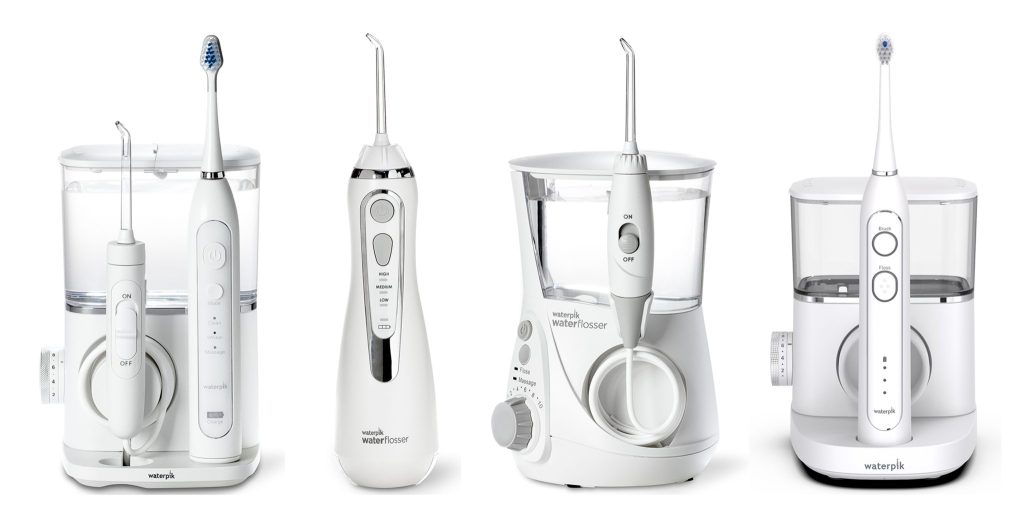
For more information on Waterpik® Water Flosser products visit www.waterpik.co.uk. Waterpik® products are available from Amazon, Costco UK, Argos, Boots, Superdrug and Tesco online and in stores across the UK and Ireland.
Join the 3,000+ dental teams who have already benefitted from a professional WaterpikÒ Lunch & Learn. Book your free session for 1 hour of verifiable CPD and a free WaterpikÒ Water Flosser – available either face to face or as a webinar – at www.waterpik.co.uk/professional/lunch-learn/
Margaret Black Bio
I have more than 40 years experience in dental practice starting as a dental nurse in an nhs practice in 1978 and qualified as a dental hygienist in 1992.
I worked for 21 years in nhs practice before becoming a clinical hygienist research assistant with the University of Dundee.
Presently I fill my time as a self employed locum hygienist Even Brighter Hygienist Services and presently cover 7 mainly private practices in Fife/Tayside/Perthshire and Angus. My enthusiasm for perio has never waned, and my post as a Professional Educator for Waterpik has enabled me to share experience gained over the years with other professionals and I love meeting lovely teams in different practices and settings.
In my personal life I am married with a grown up daughter, and enjoy networking with other professionals, reading, walking our Cockapoo and ‘grandpup’ Goldendoodle and spending time with friends and family.
[i] Dinis, M., Traynor, W., Agnello, M., Sim, M.-S., He, X., Shi, W., Lux, R. and Tran, N.C. (2022). Tooth-Specific Streptococcus mutans Distribution and Associated Microbiome. Microorganisms, [online] 10(6), p.1129. Available at: https://www.mdpi.com/2076-2607/10/6/1129/htm [Accessed 6 Jul. 2022].
[ii] Mamoun, J. and Napoletano, D. (2015). Cracked tooth diagnosis and treatment: An alternative paradigm. European Journal of Dentistry, [online] 9(2), p.293. Available at: https://www.ncbi.nlm.nih.gov/pmc/articles/PMC4439863/ [Accessed 6 Jul. 2022].
[iii] Sreenivasan, P.K. and Prasad, K.V.V. (2017). Distribution of dental plaque and gingivitis within the dental arches. Journal of International Medical Research, [online] 45(5), pp.1585–1596. Available at: https://www.ncbi.nlm.nih.gov/pmc/articles/PMC5718714/[Accessed 7 Jul. 2022].
[iv] Asakawa, M., Takeshita, T., Furuta, M., Kageyama, S., Takeuchi, K., Hata, J., Ninomiya, T. and Yamashita, Y. (2018). Tongue Microbiota and Oral Health Status in Community-Dwelling Elderly Adults. mSphere, [online] 3(4). Available at:https://journals.asm.org/doi/full/10.1128/mSphere.00332-18 [Accessed 6 Jul. 2022].
[v] Fukui, M., Asakuma, H., Horiuchi, H., Takii, H., Yoshioka, M. and Hinode, D. (2022). Oral care tablet containing kiwifruit powder affects tongue coating microbiome. Clinical and Experimental Dental Research, [online] 8(3), pp.721–728. Available at: https://onlinelibrary.wiley.com/doi/full/10.1002/cre2.591 [Accessed 6 Jul. 2022].
[vi] Faveri, M., Feres, M., Shibli, J.A., Hayacibara, R.F., Hayacibara, M.M. and de Figueiredo, L.C. (2006). Microbiota of the Dorsum of the Tongue After Plaque Accumulation: An Experimental Study in Humans. Journal of Periodontology, [online] 77(9), pp.1539–1546. Available at: https://pubmed.ncbi.nlm.nih.gov/16945032/ [Accessed 7 Jul. 2022].
[vii] www.medicalnewstoday.com. (2020). White tongue: Causes and how to get rid of it. [online] Available at: https://www.medicalnewstoday.com/articles/319814#causes [Accessed 7 Jul. 2022].
[viii] Jalayer Naderi, N., Semyari, H. and Elahinia, Z. (2015). The Impact of Smoking on Gingiva: a Histopathological Study. Iranian Journal of Pathology, [online] 10(3), pp.214–220. Available at: https://www.ncbi.nlm.nih.gov/pmc/articles/PMC4539769/ [Accessed 7 Jul. 2022].
[ix] Moreira, A.R.O., Batista, R.F.L., Ladeira, L.L.C., Thomaz, E.B.A.F., Alves, C.M.C., Saraiva, M.C., Silva, A.A.M., Brondani, M.A. and Ribeiro, C.C.C. (2020). Higher sugar intake is associated with periodontal disease in adolescents. Clinical Oral Investigations, [online] 25(3), pp.983–991. Available at: https://link.springer.com/article/10.1007/s00784-020-03387-1 [Accessed 7 Jul. 2022].
[x] Oral Health Foundation. (n.d.). Oral health statistics in the UK. [online] Available at: https://www.dentalhealth.org/oral-health-statistics[Accessed 7 Jul. 2022].
[xi] Muñoz Aguilera, E., Suvan, J., Buti, J., Czesnikiewicz-Guzik, M., Barbosa Ribeiro, A., Orlandi, M., Guzik, T.J., Hingorani, A.D., Nart, J. and D’Aiuto, F. (2019). Periodontitis is associated with hypertension: a systematic review and meta-analysis. Cardiovascular Research, 116(1), pp.28–39. doi:10.1093/cvr/cvz201.
[xii] Huang, N., Li, C., Sun, W., Yang, Y., Tang, Q. and Xiao, F. (2022). Association Between Chronic Periodontal Disease and Erectile Dysfunction: A Case–Control Study. American Journal of Men’s Health, [online] 16(2), p.155798832210847. Available at: https://journals.sagepub.com/doi/full/10.1177/15579883221084798 [Accessed 7 Jul. 2022].
[xiii] Sobocki, B.K., Basset, C.A., Bruhn-Olszewska, B., Olszewski, P., Szot, O., Kaźmierczak-Siedlecka, K., Guziak, M., Nibali, L. and Leone, A. (2022). Molecular Mechanisms Leading from Periodontal Disease to Cancer. International Journal of Molecular Sciences, [online] 23(2), p.970. Available at: https://www.mdpi.com/1422-0067/23/2/970/htm [Accessed 7 Jul. 2022].
[xiv] Waterpik UK. Waterpik Water Flosser removes 99.9% of plaque biofilm. Available online. https://www.waterpik.co.uk/professional/clinical-research/water-flosser-removes-plaque-gorur-2009/. [Accessed 11 May 2022 22]
[xv] Waterpik UK. Waterpik Water Flosser: Twice as effective as string floss. Available online. https://www.waterpik.co.uk/professional/clinical-research/dental-floss-vs-water-flossing-reduce-gingival-bleeding-rosema-2011/. Accessed 11 May 2022]





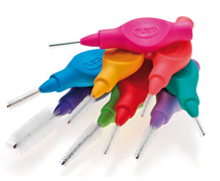 But delivering adult orthodontics can be challenging. If they expect perfection, this might not be achievable. Body dysmorphic disorder (BDD) is a “psychiatric disorder which an individual has a preoccupation with a ‘slight’ or ‘perceived’ defect in appearance”.
But delivering adult orthodontics can be challenging. If they expect perfection, this might not be achievable. Body dysmorphic disorder (BDD) is a “psychiatric disorder which an individual has a preoccupation with a ‘slight’ or ‘perceived’ defect in appearance”.  For successful orthodontics, and to establish a patient’s confidence, expectations will need to be identified and managed. Workflows are becoming increasingly digitised, with cutting-edge software available to enable virtual monitoring between practice visits, but there will also need to be plenty of good conversations too, and they must be willing to commit the time to having these discussions. The potential for age-related changes in the mouth must be understood, for example. If they have been neglecting their oral health, they will need to improve it. An adult patient is likely to have more restored teeth and exhibit signs of tooth wear. The dental team – including the dental hygienist and/or dental therapist as well as the dentist/orthodontist – will need to emphasise how to minimise the risk factors for caries, periodontal disease and gingivitis. Poor oral hygiene can compromise the success of orthodontics, so encourage them to get into good habits during the planning stage; also, they need to understand that even when their teeth are beautifully aligned, periodontal problems can still follow, if they are not cleaning properly. They may require regular visits to the dental hygienist, as well as practise elevated daily hygiene. This means they must be shown how to brush and clean interdentally, to remove debris lurking in small spaces and around their appliance. One range you could recommend is TANDEX, with different-sized brushes and interdental tools that can be used, safely and comfortably, to keep teeth and gums healthy before and during treatment, and beyond.
For successful orthodontics, and to establish a patient’s confidence, expectations will need to be identified and managed. Workflows are becoming increasingly digitised, with cutting-edge software available to enable virtual monitoring between practice visits, but there will also need to be plenty of good conversations too, and they must be willing to commit the time to having these discussions. The potential for age-related changes in the mouth must be understood, for example. If they have been neglecting their oral health, they will need to improve it. An adult patient is likely to have more restored teeth and exhibit signs of tooth wear. The dental team – including the dental hygienist and/or dental therapist as well as the dentist/orthodontist – will need to emphasise how to minimise the risk factors for caries, periodontal disease and gingivitis. Poor oral hygiene can compromise the success of orthodontics, so encourage them to get into good habits during the planning stage; also, they need to understand that even when their teeth are beautifully aligned, periodontal problems can still follow, if they are not cleaning properly. They may require regular visits to the dental hygienist, as well as practise elevated daily hygiene. This means they must be shown how to brush and clean interdentally, to remove debris lurking in small spaces and around their appliance. One range you could recommend is TANDEX, with different-sized brushes and interdental tools that can be used, safely and comfortably, to keep teeth and gums healthy before and during treatment, and beyond.
